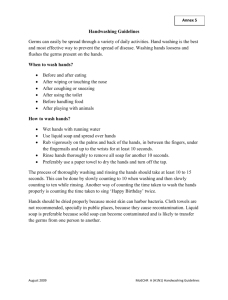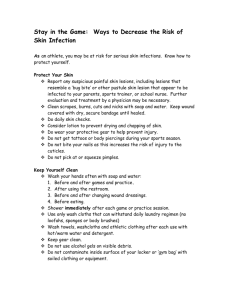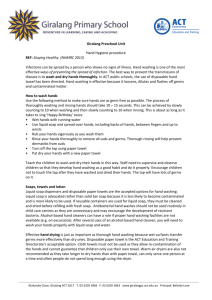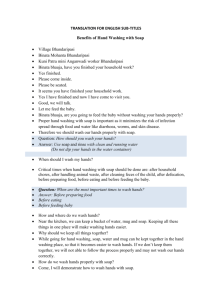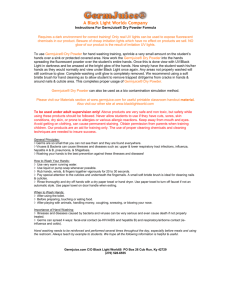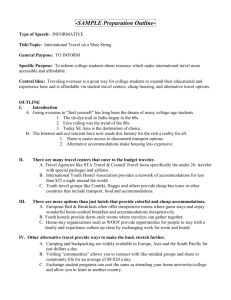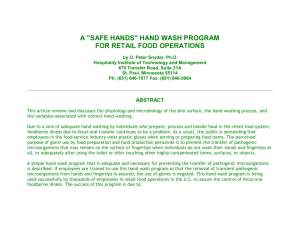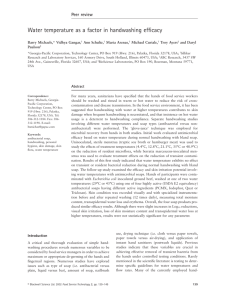Hand Hygiene Fact Sheet Effective hand washing and drying
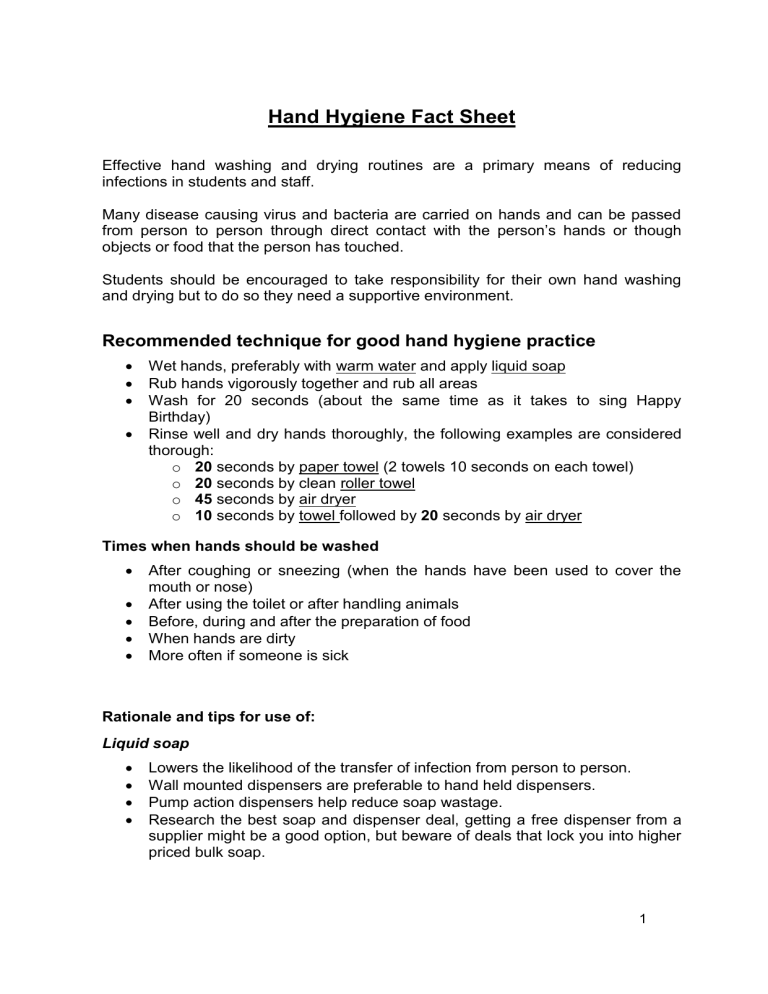
Hand Hygiene Fact Sheet
Effective hand washing and drying routines are a primary means of reducing infections in students and staff.
Many disease causing virus and bacteria are carried on hands and can be passed from person to person through direct con tact with the person’s hands or though objects or food that the person has touched.
Students should be encouraged to take responsibility for their own hand washing and drying but to do so they need a supportive environment.
Recommended technique for good hand hygiene practice
Wet hands, preferably with warm water and apply liquid soap
Rub hands vigorously together and rub all areas
Wash for 20 seconds (about the same time as it takes to sing Happy
Birthday)
Rinse well and dry hands thoroughly, the following examples are considered thorough: o 20 seconds by paper towel (2 towels 10 seconds on each towel) o 20 seconds by clean roller towel o 45 seconds by air dryer o 10 seconds by towel followed by 20 seconds by air dryer
Times when hands should be washed
After coughing or sneezing (when the hands have been used to cover the mouth or nose)
After using the toilet or after handling animals
Before, during and after the preparation of food
When hands are dirty
More often if someone is sick
Rationale and tips for use of:
Liquid soap
Lowers the likelihood of the transfer of infection from person to person.
Wall mounted dispensers are preferable to hand held dispensers.
Pump action dispensers help reduce soap wastage.
Research the best soap and dispenser deal, getting a free dispenser from a supplier might be a good option, but beware of deals that lock you into higher priced bulk soap.
1
Paper towels
Lower the likelihood of the transfer of infection from person to person.
To make these more economical, half-sized paper towels are available that can be used with standard dispensers.
Research the best towel and dispenser deal.
Roller towels
Ensure these are the type that roll and retract once used to avoid spread of infection.
Younger students may find these difficult to use.
Air dryers
Hands must be dried thoroughly to stop the spread of infection (takes approx
45 seconds).
Younger students may find air dryers frightening to use.
Warm water
Warm water is preferable to cold water.
Providing warm water improves compliance of people washing their hands at all. What proportion of students will put their hands under ice-cold water in the winter?
If warm water is supplied, it must not exceed a temperature of 40ºC.
Wash troughs
A long stainless steel wash trough has several advantages over basins that make them economic to install and maintain.
A wash trough with enough space for five students to use only takes the space of three wash hand basins.
By having temperature controlled warm water (40ºC maximum), you only need warm water taps, not cold taps. This means for example, five taps for five students instead of six taps for three students.
A wash trough only needs one waste outlet. Three basins need three outlets.
Wash troughs are easier to clean than multiple hand basins.
2
REMEMBER - HAND HYGIENE!
The most important thing you can do to keep from getting sick is to wash your hands!
Hand washing and drying is the single most important measure to reduce the risks of transmitting infection from one person to another.
This will be a key matter to communicate to students by example and by practice.
Hand washing with soap and water, alcohol-based hand rub, or antiseptic hand wash should be performed regularly.
Hands should be thoroughly dried, preferably using disposable tissues or towels. Use the disposable towel to open the door.
Hand washing and drying should always be done after coughing, sneezing or handling used tissues or after touching objects, materials or hard surfaces that may have been contaminated by someone else with the infectious illness.
Hand-to-face contact that can occur during eating, normal grooming, or smoking presents significant risks because of the potential for transmission of influenza from surfaces contaminated with wet respiratory droplets.
Hand washing and drying should always be carried out before and after eating, grooming, or any other activity that involves hand-to-face contact.
N: B The Ministry of Education has worked with the Ministry of Health to produce this
Hand Hygiene Fact Sheet.
3
